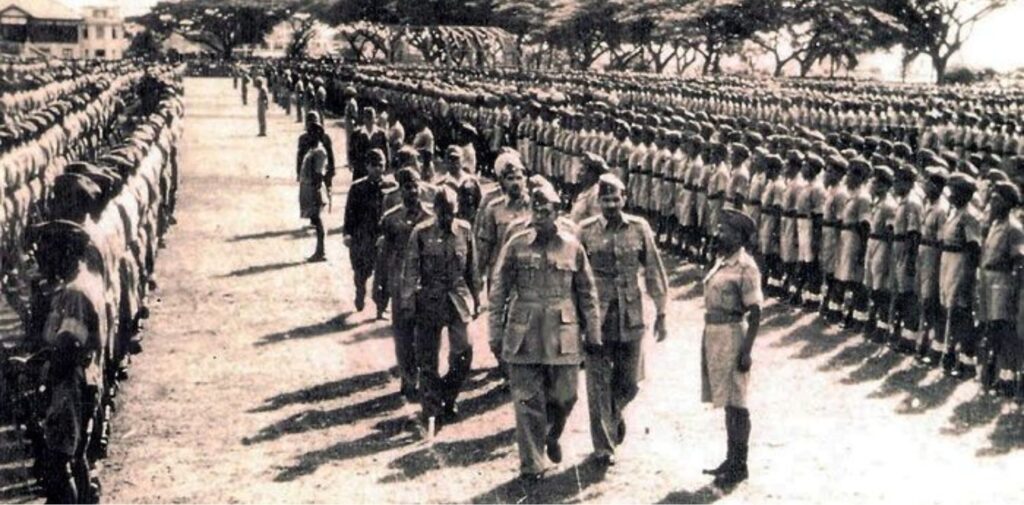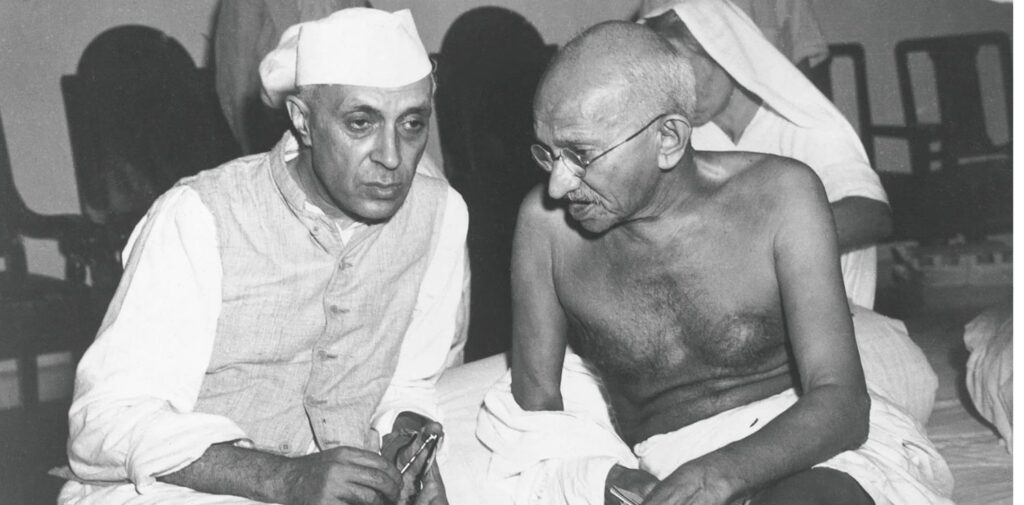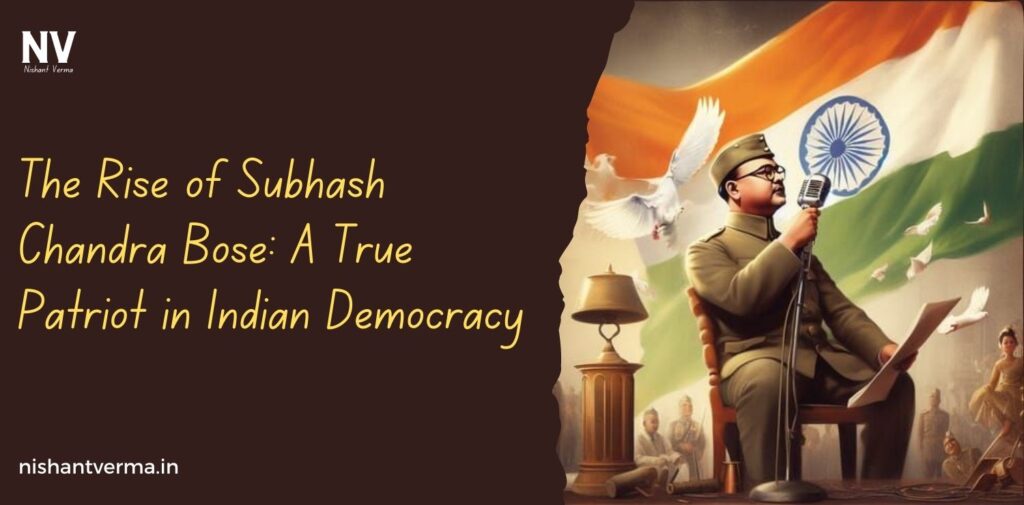Subhash Chandra Bose, an iconic figure in the Indian independence movement, is remembered not only for his relentless struggle against British colonial rule but also for his vision of a free and democratic India. His extraordinary leadership and dedication to the cause of freedom marked him as one of the most significant leaders in India’s history. Unfortunately, his contributions have often been overshadowed by the narratives of other leaders, particularly Jawaharlal Nehru and Mahatma Gandhi. This article delves into Bose’s life, his remarkable work, and the unjust downgrading of his legacy by the very leaders who emerged as central figures in India’s independence.
Early Life and Education: Subhash Chandra Bose
Subhash Chandra Bose was born on January 23, 1897, in Cuttack, Odisha. He hailed from a well-to-do Bengali family that valued education. His father, Janakinath Bose, was a prominent lawyer, and his mother, Prabha Devi, was a deeply religious woman. Subhash was a brilliant student, excelling in his studies at the prestigious Presidency College in Calcutta and later at the University of Calcutta. He showed early signs of his leadership abilities and an intense desire to fight against British imperialism.
After completing his graduation, Bose went to England to study at Cambridge University, where he qualified for the Indian Civil Services (ICS). However, he soon realized that his heart lay in the struggle for India’s freedom, and he resigned from the ICS to return to India and join the freedom movement.

The Political Rise
Bose’s political journey began in earnest when he joined the Indian National Congress (INC) in 1921. He quickly became an influential figure within the party and worked closely with leaders like Motilal Nehru and Gandhi. However, Bose had a different vision for India’s struggle for independence. He believed in a more aggressive approach, in stark contrast to Gandhi’s philosophy of non-violence.
In 1938, Bose was elected as the President of the INC. His presidency was marked by his determination to push for complete independence from British rule. However, he faced opposition from the party’s leadership, particularly from Gandhi and Nehru. The differences in ideologies led to his resignation from Congress in 1939. Bose believed that India needed a more radical approach to achieve independence and was willing to explore all avenues, including armed struggle.
Formation of the Forward Bloc
After leaving the INC, Bose founded the Forward Bloc in 1939 to consolidate the political left and unite various factions of the freedom movement. He sought to attract youth and labor movements to his cause, emphasizing the need for a united front against colonial rule. His vision was to create a secular, democratic state that would ensure equality for all citizens, regardless of caste or creed.
Bose’s political acumen and charisma attracted many young leaders and activists who were disillusioned with the Congress leadership. He tirelessly worked to inspire the masses and mobilize them against British rule, advocating for socialism as a means to ensure justice and equity in post-independence India.
The Great Escape and the INA
As World War II broke out, Bose recognized that the global conflict presented a unique opportunity for India to gain independence. In 1941, he undertook a daring escape from house arrest in Calcutta and traveled to Germany, seeking support from Axis powers to free India from British rule.
In Germany, Bose formed the Indian National Army (INA), composed of Indian prisoners of war and expatriates who were willing to fight for India’s freedom. His call to arms resonated deeply with many Indians, inspiring them to join the fight against British colonialism. Under Bose’s leadership, the INA made significant advances against British forces in Southeast Asia, particularly in Burma.
Bose’s vision for the INA was not merely military; he aimed to establish a government-in-exile and promote the idea of a free and democratic India. He made significant efforts to gain international support for the Indian cause, reaching out to leaders of various countries. Bose believed that India could only achieve true freedom through collective struggle and international solidarity.

The INA’s Role in the Freedom Struggle
The INA’s involvement in the Second World War had profound implications for India’s independence movement. The army played a crucial role in mobilizing Indian soldiers and civilians against British rule. Bose’s leadership and charisma galvanized the Indian populace, and he became a symbol of hope and resistance.
In 1944, the INA launched the historic “Delhi Chalo” campaign, which aimed to march to Delhi and capture the capital. Though the campaign ultimately did not succeed, it left a lasting impact on the British administration. The courage and sacrifices of INA soldiers inspired countless Indians and highlighted the growing demand for complete independence.
Post-War: The INA Trials and Betrayal
After the war, the British authorities captured many INA soldiers and put them on trial for treason. The trials garnered massive public support, as people rallied behind the soldiers, viewing them as heroes. Bose’s absence was keenly felt during this time, as he had disappeared from public view after the war, with rumors circulating about his fate.
The INA trials marked a turning point in the Indian independence movement. The public outrage against the trials galvanized support for independence and made it clear that the British could no longer suppress the rising tide of nationalism. This period marked the beginning of the end of British rule in India.

Bose’s Vision for India
Bose envisioned a democratic India free from colonialism, where every citizen would have equal rights. He believed in a secular state that would promote social justice and economic equality. Bose’s commitment to these principles was unwavering, and he sought to empower the marginalized sections of society, including women and the working class.
His famous slogan, “Give me blood, and I shall give you freedom,” encapsulated his fiery spirit and determination. Bose’s vision was not just about political independence; it was about creating a society that would uphold the values of justice, equality, and fraternity.
The Nehru-Gandhi Narrative
Despite Bose’s immense contributions, the mainstream narrative of India’s independence has often sidelined him. The leaders of the Congress, particularly Nehru and Gandhi, painted Bose as an extremist and often portrayed his methods as counterproductive. This narrative conveniently overlooked Bose’s significant role and the sacrifices made by the INA.
The establishment of a new government post-independence saw Nehru and Gandhi firmly in control of the narrative. They presented themselves as the primary architects of India’s freedom, relegating Bose to the margins. This was not merely a political tactic but also an ideological one, as Bose’s vision of a secular, socialist India posed a challenge to the Congress’s more moderate stance.

Moreover, the Congress leadership’s reluctance to acknowledge Bose’s contributions stemmed from their fear of his influence on the masses. Bose had a profound connection with the youth and a considerable following among those who were disillusioned with the slow progress of the Congress’s non-violent methods. By undermining Bose’s legacy, Nehru and Gandhi aimed to maintain their political dominance in the newly independent nation.
Legacy and Resurgence
Bose’s legacy has witnessed a resurgence in recent years as more people recognize his contributions to India’s freedom struggle. His vision of a democratic and egalitarian India resonates with the aspirations of many, particularly among the youth. Several initiatives and events commemorating his life and work have taken place, fostering a renewed interest in his contributions.
Bose’s birth anniversary is now celebrated as Parakram Divas, honoring his courage and dedication to India’s freedom. Educational institutions and organizations have begun to recognize his contributions, ensuring that future generations understand the significance of his role in the independence movement.
The resurgence of interest in Bose also highlights the importance of acknowledging the diverse narratives within India’s freedom struggle. It is crucial to recognize the sacrifices made by all leaders, including those like Bose, who fought valiantly for a free India.
Conclusion: Reclaiming Bose’s Legacy
Subhash Chandra Bose remains an emblem of courage and determination in India’s fight for freedom. His vision for a united, secular, and democratic India continues to inspire millions. The downgrading of his contributions by the Nehru-Gandhi establishment reflects a historical injustice that needs to be rectified.
As India continues to evolve as a democracy, it is essential to recognize and celebrate the diverse leaders who contributed to its freedom. Bose’s legacy deserves its rightful place in the annals of history, and acknowledging his contributions is crucial for fostering a more inclusive understanding of India’s past. It is time to reclaim Subhash Chandra Bose’s legacy and honor the spirit of a true patriot who fought for a free and just India.




